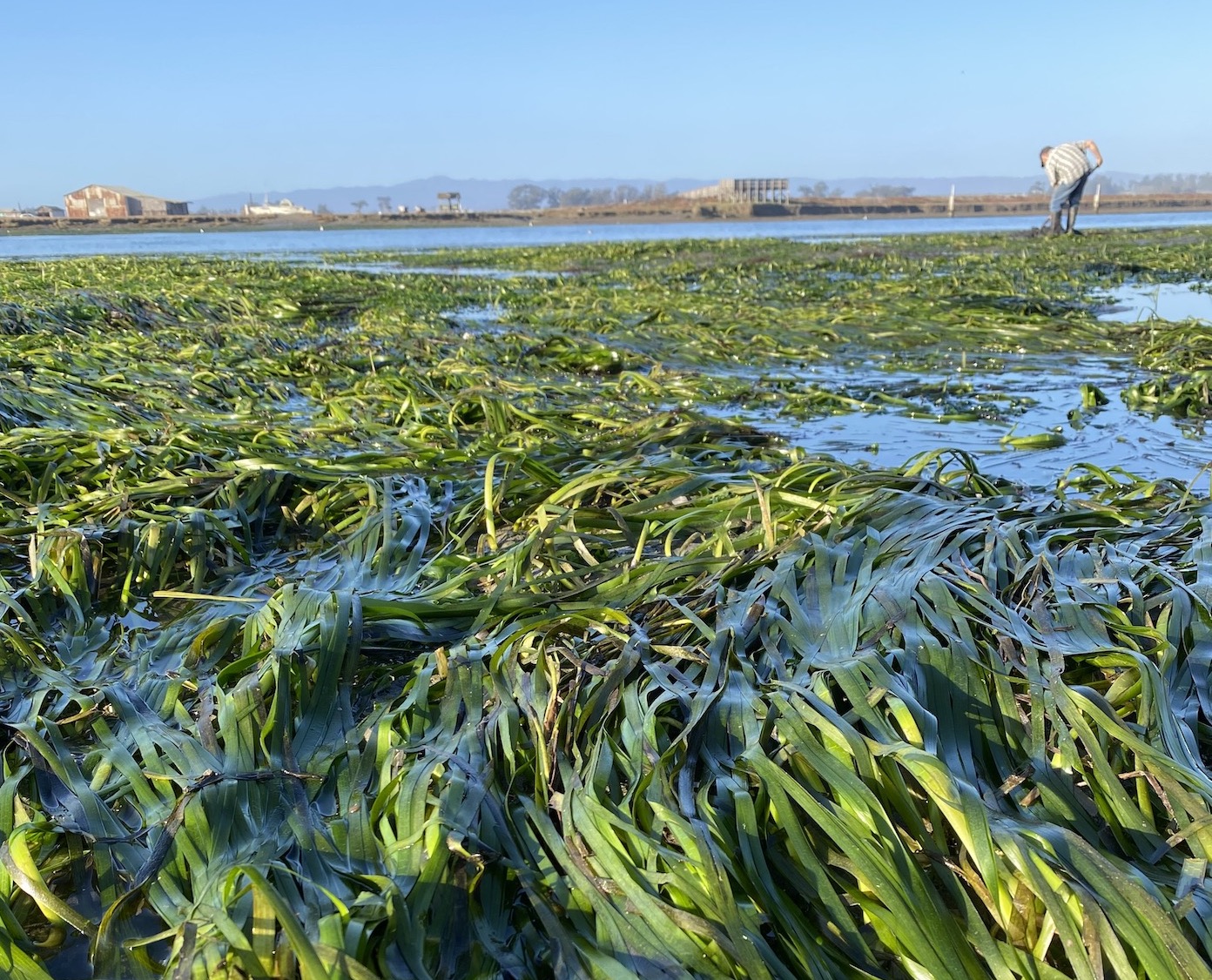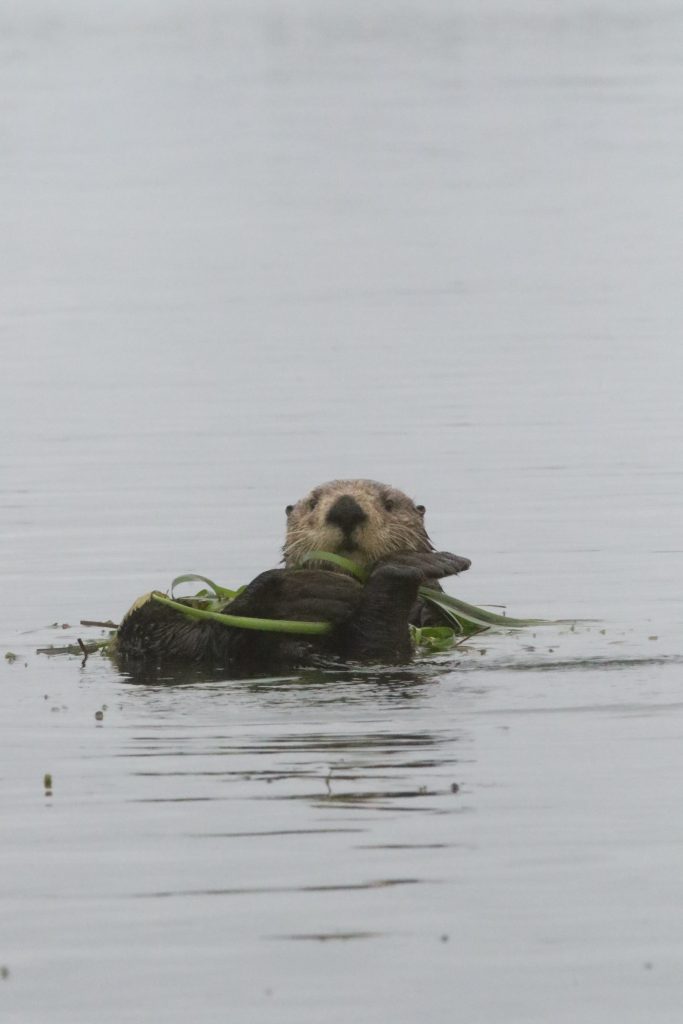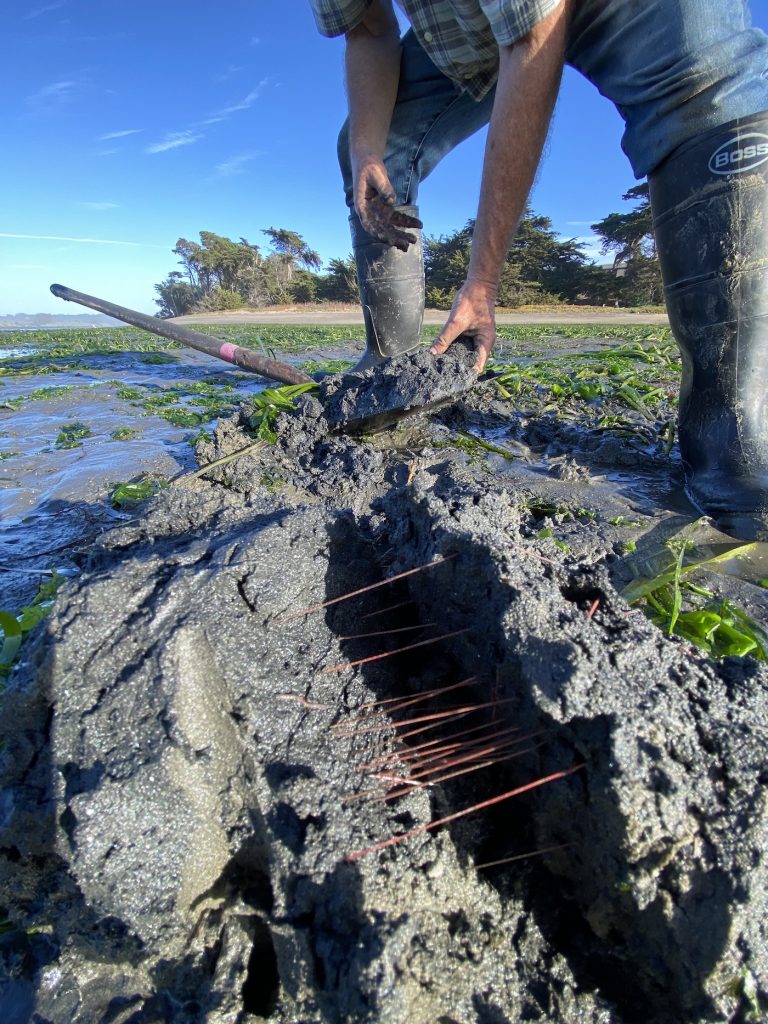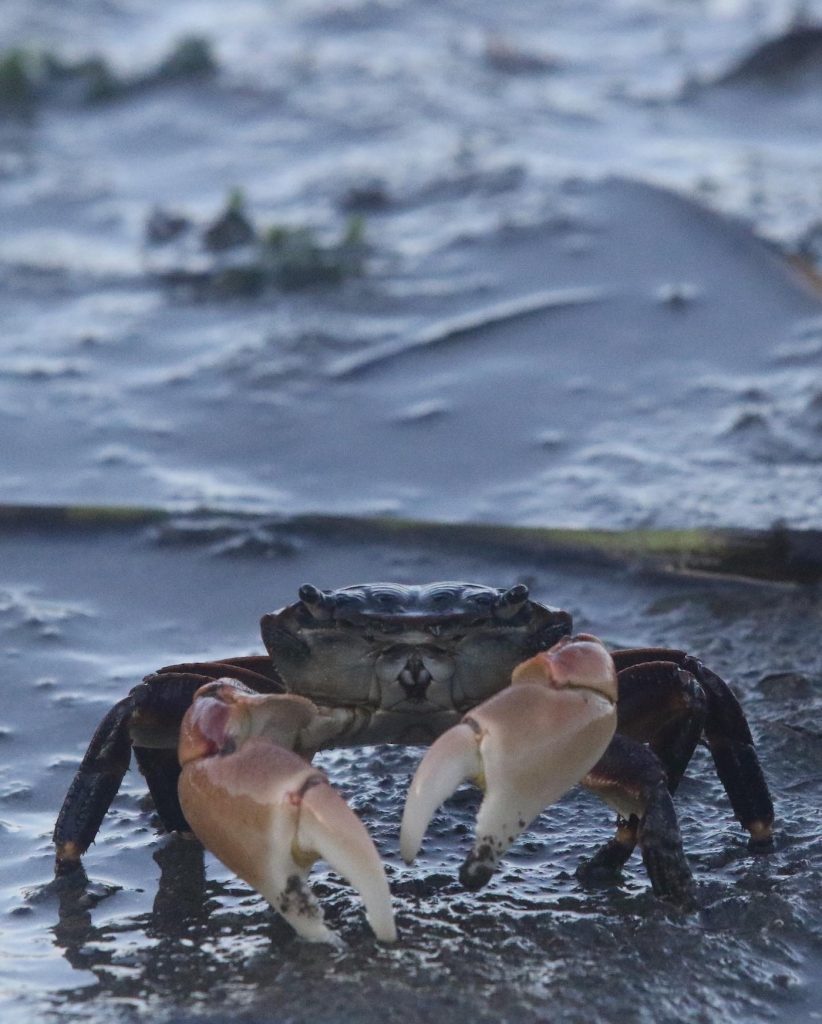Knee Deep

We walked gingerly across a teeming mudflat on a minus tide within Elkhorn Slough, located in Moss Landing and within Monterey Bay. As we glopped along the muddy banks of the slough, legions of line shore crabs scrambled into the shadows dramatically baring their pinchers in self-defense. The eel grass was exposed and laid across a huge swath of the second largest coastal estuary in California. The mud was gooey thick, and more than once I literally walked right out of my mud boots.

I was mucking it up out on the mudflat with Mark Silberstein, the long-time executive director of the Elkhorn Slough Foundation, a nonprofit dedicated to restoration and education on the slough. Silberstein has been at the helm since 1983, and after all this time he was still enthusiastic about the inner workings of Elkhorn Slough.
“Look here,” he said, after he turned over a shovelful of mud. “Look at all those rubberband worms.”
Silberstein began his career as an invertebrate biologist. When he took on the task of restoring Elkhorn Slough, one of the first places he lived on the slough was in a small shack overlooking the area right where we were slogging it out in the mud, just a few hundred feet east of a hyperkinetic Pacific Coast Highway 1.
“When I first moved here,” he continued, “there was no eel grass here at all.”
Silberstein and I continued along the banks of the slough enjoying our mudflat safari. Virtually every scoop of mud revealed vibrant life beneath the floor of Elkhorn Slough. There was the impressive ghost shrimp equipped with its Swiss Army Knife-like quiver of claws and pinchers. There were several sightings of the arrow goby. Also dug up were gaper and bent-nosed clams, and my favorite being a colorful species of sea hare found on a blade of eel grass. Its iridescent green blending in well against the eel grass densely draped across the wetland.
However, as much as we were finding, we were merely scratching the muddy surface. According to Wikipedia, “It has been estimated that 1 cubic foot of mud from the slough, roughly the size of a bucket, contains: 500 billion bacteria; 500 million diatoms, microscopic plant-like organisms; 50,000 protozoan, microscopic single-celled animals; 50,000 worms; 5,000 crustaceans, including crabs and shrimp; and 40 clams.”
With the minus tide there was lots of evidence of southern sea otter predation in the eel grass. At high tide the otters dive into the eel grass searching for food, mainly clams and crabs. While on those dives to the muddy bottom, the otters dig these big pits foraging for food to satiate their voracious appetites. At minus tide the pits are revealed within the eel grass. It’s a graveyard of empty clam shells throughout the brilliant green eel grass. Elkhorn Slough possesses the highest concentration of southern sea otters in California.

Rubberband worms at Elkhorn Slough 
A line shore crab
The minus tide was also an opportunity for a throng of migrating shorebirds to probe the mudflats for food. Flocks of marbled godwits clustered in the eel grass busily sticking their entire beaks in the mud. Also feeding were willets, legions of western sandpipers, and occasionally a long-billed curlew. From above we heard the raspy calls of Caspian terns dive-bombing the main channel of the slough. Every so often a harbor seal lazily maneuvered into the shallows, along with a couple of kayakers, while squadrons of California brown pelicans skimmed just above the glassy surface of the slough. On cue an otter swam by on its back holding a clam firmly against its chest. Suddenly, I heard the crunching of the clam shell as the otter quickly snarfed down another meal.
As sunset approached, the incoming high tide began to trickle into the estuary. The shorebirds retreated to higher ground within the soft hues of pickleweed, and the invertebrates were once again concealed in their muddy domain. Otters were beginning to mill about in the shallows, the inner workings of Elkhorn Slough shifting with the ebb and flow of the tides.







